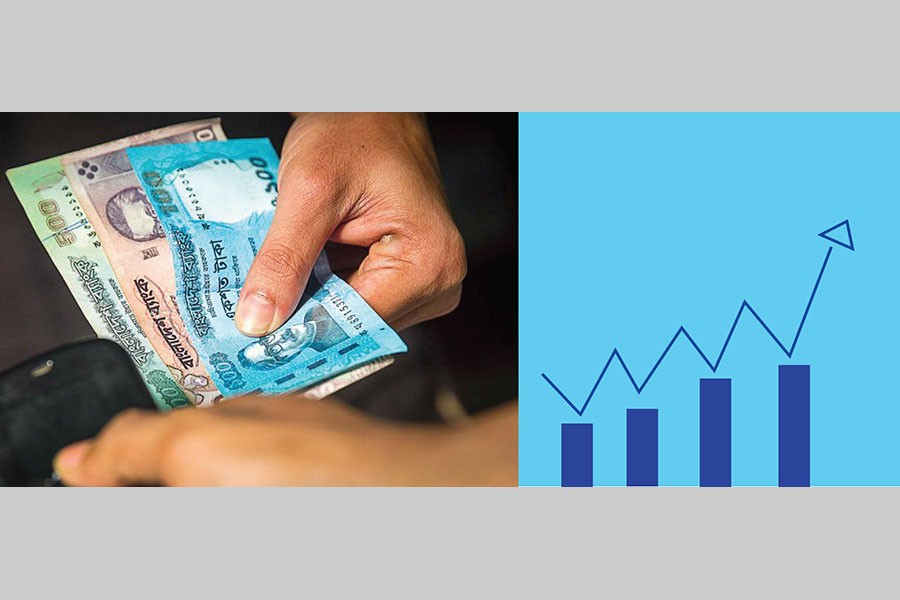A renewed interest has been created in South-South cooperation in the wake of the adoption of the Sustainable Development Goal (SDG) by the United Nations. The implementation of the 17 SDG goals and 169 targets - highlighting 5Ps, such as planet, population, prosperity, peace and partnership - would require an estimated $5.0-11 trillion a year. Meanwhile, the amount of official development assistance (ODA) from the Organisation for Economic Co-operation and Development (OECD) countries has been dwindling over the years. South-South cooperation may, under the circumstances, help the developing countries in implementing the SDG goals and targets. This matter was highlighted in a presentation Abdul Momen, a former UN Representative of Bangladesh, recently submitted to the Econmic Resources Division (ERD), Planning Commission.
Bangladesh has performed quite well in achieving the goals and targets of the earlier UN's Millennium Development Goal (MDG). MDG successes notwithstanding, poverty in the world today prevails amidst plenty. Only 85 rich persons have amassed more wealth than half of the total population of the world (3.7 billion). This reminds one the remark of Mahatma Gandhi's remark: "God has created enough to meet the needs of people but not enough to meet the greed of a few". What the world has achieved in the name of development so far, could be described as 'distorted development' if not the 'development of underdevelopment'. Statistics show: nearly 57 million children cannot go to school, nearly 2.2 billion people live below the poverty line and nearly 850 million people suffer from chronic hunger mostly in the south. Millions, mostly in the South, suffer from acute shortage of essential infrastructure while about 1.4 billion people still have no reliable electricity, 900 million lack access to clean water, and 2.6 billion do not have adequate sanitation. The deprivations go on with violence, disasters, 60 million refugees, migration through boats, etc. All this in a world dazzled with 'dicey' development.
Though Bangladesh is a success story in MDG, the success was not equally distributed globally. Out of 33 least developed countries (LDCs) in Africa, only four could cut poverty by half, and in Asia and Pacific region, out of 14 only three could meet MDG-1.
However, the main question is: where would $5-11 Trillion dollars flow from to feed SDGs? Drawing on prevailing estimates, one could argue that only Asia needs for infrastructure development, nearly $8.0 trillion; to end poverty and hunger, $66 billion; to have education for all $42 billion and for better health care $337 billion a year. At the moment, the total of annual ODA hovers around $135-138 billion a year. So, experts suggest the following as a way out: (a) increasing domestic resource mobilisation; (b) reducing cost of remittance transfer and cost of mobility; (c) increasing trade and foreign direct investment (FDI); (d) technology transfer; (e) bringing back corrupt money housed in banks of development partners; (f) taking advantage of falling oil prices; (g) increasing public-private partnership and (h) intensifying South-South partnership.
The suggestions are apparently worth trying. But it is easier said than done. In Bangladesh, for example, progress on (a), (b) and (c) has been more or less impressive over time but (e) is an uphill task as the influential people of Bangladesh are engaged in this trade. Not much progress could be in evidence as far as (g) is concerned despite pledges in successive budgets.
Whether South-South partnership- although much needed - could be intensified, is a million dollar question. Southern countries are afflicted by inter-country as well as intra-country conflicts such as tribal or communal, including the most recent rise of terrorism. The political mistrust or distrust is another serious constraint in building the bridge between South and South. The most typical example in this case is the South Asian Association for Regional Cooperation (SAARC) - almost non-existent in impacts but ritual existence for decades. The failure could be adduced mainly to rivalry between Pakistan and India.
Nevertheless, hopes also loom large on the horizon. For example, as Dr Momen notes, the launching of $100-billion New Development Bank in July 2015 and the establishment of the Asian Infrastructure Investment Bank (AIIB) present windows of opportunities for the South to seize on the sources for investment for sustainable development. Dr. Momen has rightly suggested that time is ripe now to set up the proposed South-South Finance and Development Ministers Forum under the UN.
The good news is that Bangladesh can now offer to its southern friends a replicable model of socio-economic development in exchange for other types of comparative advantages that it does not have. Even it can now lead some of the forums created for strengthening South-South cooperation under the aegis of the UN. In a High-level Round Table on South-South Cooperation, Prime Minister Sheikh Hasina's observations imply that Bangladesh is no longer in recipients' rank rather it stands in lenders' line. Bangladesh has a range of good practices on poverty alleviation, social protection, disaster risk reduction, climate change adaptation, non-formal education, primary health care delivery, food security, sustainable fisheries.
United, South stands, divided it falls.
Abdul Bayes is a former Professor of Economics at the Jahangirnagar University.


